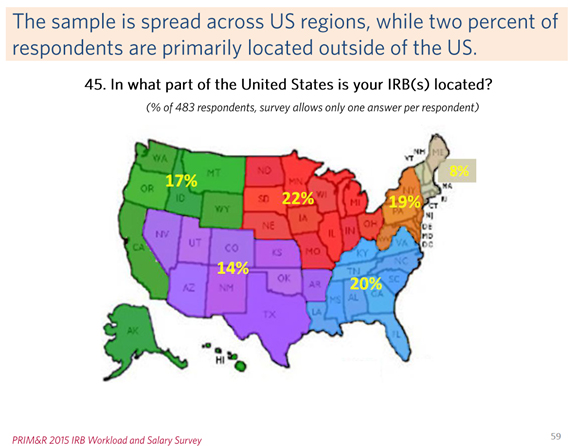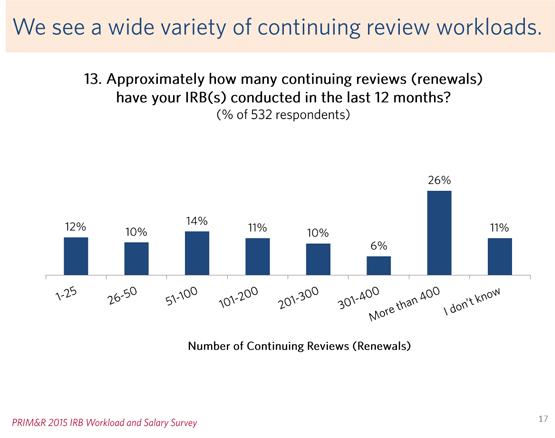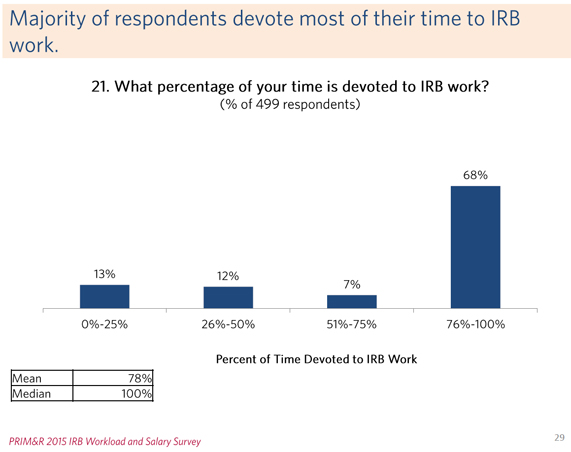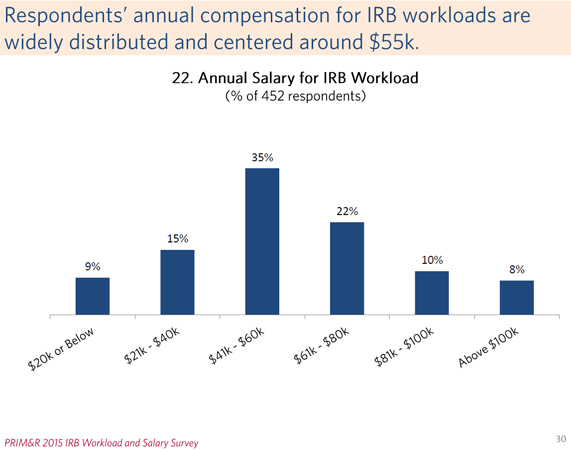The annual Workload and Salary Survey reports offer insight into workload trends, salaries, and staffing patterns for institutional review board (IRB) and institutional animal care and use committee (IACUC) offices. By publishing these reports, PRIM&R provides its members, and the wider research oversight committee, a valuable tool to aid in resource management. Today we’ll focus on the 2015 IRB Workload and Salary Survey results. A future post will discuss the IACUC survey results.
Who Completed the Survey?
Over 600 individuals contributed to the survey; the sample represented professionals with a wide-range of IRB-related experience. Geographically, all areas of the United States were represented, with the Midwest having the highest representation (22%) of the sample. Respondents were also asked about their expectations for future employment; 48% predicted that they would retire from their current organization. Workload Trends
Workload Trends
The survey profiles respondents’ organizational affiliations and their accreditation status, the type of research the IRB reviews, and research funding sponsors.
The survey asks respondents a series of questions about their workload over the last twelve months: the number of IRBs with whom they worked, the number of full board review meetings, the number of initial and continuing reviews conducted, the number of amendments/modifications, as well as the number of adverse events and unexpected outcomes reviewed. The report compares this information with the number of full-time equivalent (FTE) staff members assigned to respondents’ IRBs.

The survey also explores challenges in the workplace, and the report details the extent to which these challenges have contributed to respondents’ excessive or unnecessary workload.
Staffing Patterns
The IRB Workload and Salary Survey asks respondents not only about the number of FTE staff members assigned to their IRBs, but also the number of FTE IRB staff that directly or indirectly report to them.
The report also details whether respondents’ IRB-related employment is full-time or part-time, the percentage of time devoted to IRB work, and the average number of hours worked in a week. Information on respondents’ educational backgrounds and certifications are also listed.
Salaries
The IRB Workload and Salary Survey report charts salary statistics by job role; beyond this information, it also details salaries for those who have entered the IRB field within the past five years. Additionally, the report includes information on bonuses and benefits that are commonly offered for employees. Also included in the report are details about stipends that are offered to IRB chairs and members, and how these are calculated.
Also included in the report are details about stipends that are offered to IRB chairs and members, and how these are calculated.
PRIM&R members can access both the IACUC and IRB Workload and Salary Surveys on the Knowledge Center. Nonmembers can purchase the reports online.
Do you have a question about the IRB Workload and Salary Survey? Is there information you would like to see captured in the future? Please email us at membership@primr.org.

No comments! Be the first commenter?